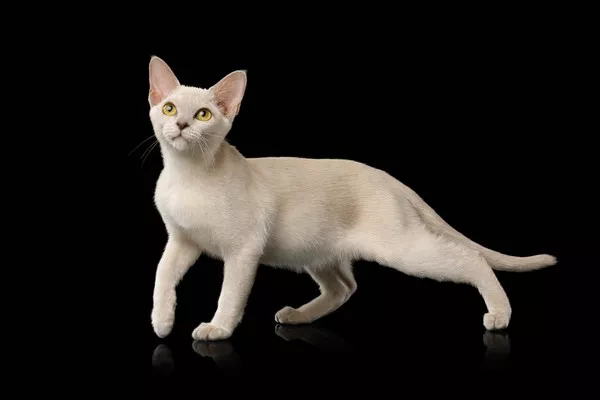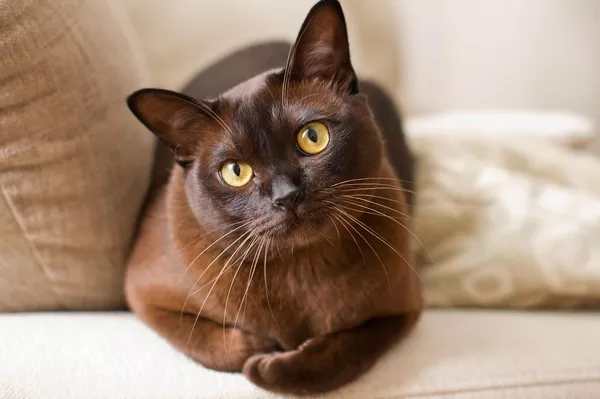Burmese cats are known for their affectionate nature, striking eyes, and muscular bodies. As with any breed, maintaining an appropriate weight is crucial for their health and well-being. This article provides a comprehensive guide on the ideal weight range for male Burmese cats, along with feeding tips to ensure they stay healthy and active.
Ideal Weight for Male Burmese Cats
Understanding the Burmese Cat Breed
Burmese cats are medium-sized cats with a muscular build. They have a short, fine coat and come in a variety of colors, including sable, champagne, blue, and platinum. Known for their playful and affectionate nature, Burmese cats are also quite vocal and enjoy interacting with their human companions.
Weight Range for Male Burmese Cats
The ideal weight for a male Burmese cat typically ranges between 8 to 12 pounds (3.6 to 5.4 kilograms). However, individual cats may vary slightly depending on factors such as age, genetics, and activity level. It’s important to remember that muscle mass, rather than fat, contributes to their weight due to their naturally muscular physique.
Factors Affecting Weight
Age: Younger cats, particularly kittens and adolescents, may weigh less than adults. Senior cats may also experience weight changes due to age-related health issues.
Genetics: Some Burmese cats may naturally be larger or smaller than others due to their genetic makeup.
Activity Level: Active cats that engage in regular play and exercise may have a healthier weight compared to sedentary cats.
Assessing Your Cat’s Weight
Body Condition Score (BCS)
A Body Condition Score (BCS) is a useful tool for assessing your cat’s weight. It involves evaluating the cat’s body to determine if it is underweight, overweight, or at an ideal weight. The BCS scale typically ranges from 1 to 9, with 5 being the ideal score for a healthy cat.
1-3: Underweight
4-5: Ideal weight
6-9: Overweight
To use the BCS:
Feel the Ribs: You should be able to feel your cat’s ribs without pressing too hard. If the ribs are too prominent, the cat may be underweight. If they are difficult to feel, the cat may be overweight.
Check the Waistline: Look for a visible waistline when viewing your cat from above. An ideal weight cat will have a slight indentation behind the ribs.
Abdomen: There should be a slight upward tuck of the abdomen when viewed from the side.
Regular Weigh-Ins
Regular weigh-ins are important to monitor your cat’s weight. Use a reliable digital scale and weigh your cat monthly. Keep a record of the weights to track any significant changes over time.
Feeding Tips for Male Burmese Cats
Nutritional Needs
Burmese cats, like all cats, require a diet high in animal protein, moderate in fat, and low in carbohydrates. Cats are obligate carnivores, meaning they need nutrients found primarily in animal tissues.
Choosing the Right Food
High-Quality Commercial Cat Food: Select a high-quality commercial cat food that lists meat, poultry, or fish as the first ingredient. Look for foods that meet the Association of American Feed Control Officials (AAFCO) standards for complete and balanced nutrition.
Wet vs. Dry Food: Both wet and dry foods have their benefits. Wet food can help with hydration and may be more palatable, while dry food can help maintain dental health. A combination of both can provide a balanced diet.
Grain-Free Options: Some cats may have sensitivities to grains. Grain-free options can be beneficial but ensure they still provide complete nutrition.
Feeding Guidelines
Portion Control: Follow the feeding guidelines provided on the cat food packaging, adjusting based on your cat’s age, weight, and activity level. Overfeeding can lead to obesity, while underfeeding can result in malnutrition.
Scheduled Feeding: Establish a feeding schedule with set meal times. Avoid free-feeding (leaving food out all day) as it can lead to overeating and weight gain.
Treats: Treats should not make up more than 10% of your cat’s daily caloric intake. Choose healthy, low-calorie treats and use them sparingly.
Homemade Diets
Consult a Veterinarian: If you prefer to prepare homemade diets, consult with a veterinarian or a veterinary nutritionist to ensure the diet is nutritionally balanced.
Recipes and Supplements: Use reputable recipes and consider adding necessary supplements to meet your cat’s nutritional needs.
Hydration
Fresh Water: Ensure your cat has access to fresh, clean water at all times. Proper hydration is essential for overall health.
Water Fountains: Some cats prefer running water. Investing in a cat water fountain can encourage your cat to drink more.
Monitoring and Adjusting Diet
Regular Veterinary Check-Ups
Regular veterinary check-ups are essential for monitoring your cat’s weight and overall health. Your veterinarian can provide personalized feeding recommendations and adjust the diet as needed.
Adjusting for Life Stages
Kittens: Kittens have higher energy needs and require more frequent meals. Feed a kitten-specific formula until they are about a year old.
Adults: Adult cats require balanced maintenance diets. Adjust portion sizes to maintain an ideal weight.
Seniors: Senior cats may have different nutritional needs due to age-related changes. Consider senior-specific formulas and monitor for any health issues that may affect their diet.
Weight Management
Weight Loss Plans: If your cat is overweight, work with your veterinarian to develop a safe and effective weight loss plan. Gradual weight loss is safer than rapid weight loss.
Weight Gain: If your cat is underweight, investigate any underlying health issues and consider high-calorie, nutrient-dense foods to promote weight gain.
See Also: Why Do Norwegian Forest Cats Chirp?
Exercise and Enrichment
Importance of Physical Activity
Regular physical activity is crucial for maintaining a healthy weight and preventing obesity. Exercise also provides mental stimulation and helps prevent behavioral issues.
Interactive Play
Toys: Use interactive toys, such as feather wands, laser pointers, and balls, to engage your cat in play. Rotate toys to keep them interesting.
Play Sessions: Schedule regular play sessions to encourage physical activity. Aim for at least two 15-minute sessions per day.
Environmental Enrichment
Climbing Structures: Provide climbing structures, such as cat trees and shelves, to promote climbing and jumping.
Scratching Posts: Scratching posts can satisfy your cat’s natural instincts and provide physical exercise.
Puzzle Feeders: Puzzle feeders and treat-dispensing toys can encourage mental stimulation and slow down eating, preventing overeating.
Common Health Issues Related to Weight
Obesity
Obesity is a common issue in domestic cats and can lead to various health problems, including diabetes, arthritis, and heart disease. Maintaining an ideal weight is crucial to prevent these conditions.
Diabetes
Overweight cats are at a higher risk of developing diabetes. Managing your cat’s weight through proper diet and exercise can reduce this risk significantly.
Arthritis
Excess weight can strain your cat’s joints, leading to arthritis and mobility issues. Keeping your cat at a healthy weight can help prevent joint problems and improve their quality of life.
Heart Disease
Obesity can contribute to heart disease in cats. A balanced diet and regular exercise are essential for cardiovascular health.
Conclusion
Maintaining an ideal weight for male Burmese cats is crucial for their overall health and well-being. The ideal weight range for a male Burmese cat is typically between 8 to 12 pounds, but individual factors such as age, genetics, and activity level can influence this range. Using tools like the Body Condition Score (BCS) and regular weigh-ins can help monitor your cat’s weight effectively.
By following these guidelines and monitoring your cat’s health closely, you can ensure that your male Burmese cat remains at an ideal weight, leading a happy, healthy, and active life.























